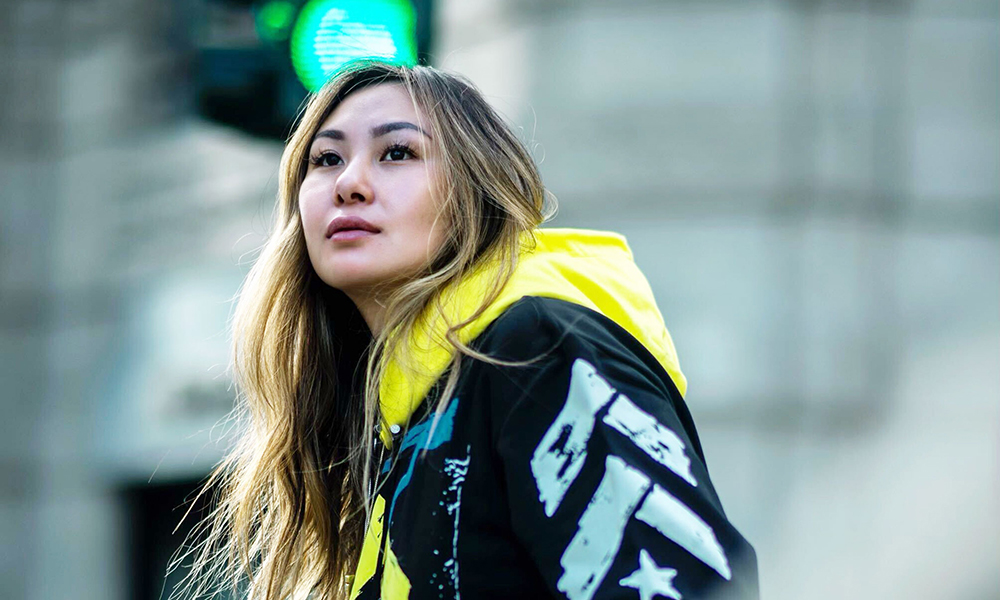
露茜·郭已经是一位白手起家的百万富翁,她的简历中可以写上一笔参与创建了一家真正的独角兽公司:估值70亿美元的Scale AI。这位现年29岁的创业者接受了《财富》杂志的独家采访,介绍了她的最新创业项目Passes的4,000万美元A轮融资。Passes是一个创作者变现平台。
Passes在2022年的种子轮融资中融得900万美元,由位于奥斯汀的加密货币和区块链投资者Multicoin Capital领投。帕里斯·希尔顿的11:11 Media、杰克·保罗的Anti Fund,以及Eventbrite联合创始人凯文·哈茨参与了此轮融资。
A轮融资由来自凯鹏华盈(Kleiner Perkins)的玛丽·米克尔和穆德·洛加尼经营的位于旧金山的Bond公司领投。Bond此前曾在初创公司Humane参与早期投资。该公司开发出热度极高的可穿戴设备AI pin。该基金还参与过Canva、Epic Games、DoorDash和Uber的后期投资。露茜·郭计划利用这笔资金扩大Passes的团队,目前其团队成员只有15人。
A轮融资吸引了来自科技和传媒领域的重量级投资者,包括Skims联合创始人艾玛和詹斯·格里德,以及由Creative Arts Agency联合创始人兼前迪士尼(Disney)总裁迈克尔·奥维茨投资的基金Crossbeam Ventures。她拒绝披露公司的估值。
以下是Passes能吸引硅谷大人物的原因。
Passes的业务是什么?
Passes社交媒体平台帮助内容创作者直接从观众身上获得收入,从而实现收入流多样化。在社交平台上有10万粉丝的网红,可以通过Passes向付费订阅者发布独家内容、给粉丝发私信、直播、进行一对一通话和赚取小费等。
她对《财富》杂志表示:“我认为创作者就是一家小公司,Passes的目标是将他们培养成大公司。”
社交媒体创作者的收入通常来自公司邀请他们向观众宣传特定产品所支付的费用。但依赖品牌合作不能保证网红的收入稳定,因为这取决于公司希望与网红们合作的项目和时间。因此,他们每个月的收入可能相差数千美元。那些从社交媒体上赚钱的网红们,还要受制于大平台和不断变化的算法,这迫使他们不得不适应当前流行的趋势。近几年,为了实现收入多样化和保证收入稳定,创作者开始转向Passes等第三方平台。
虽然Passes的作用与Patreon和Fanfix等平台类似,但它还提供其他功能,如禁止录屏技术,以及向在创作者账户上有特定操作的粉丝发送自动销售信息等。露茜·郭对《财富》杂志表示,计划将AI技术整合到平台,以简化部分销售功能。
从小学开始出售《口袋妖怪》卡片
露茜·郭刚上小学就展现出技术和商业思维。她从小学开始就向朋友兜售《口袋妖怪》(Pokémon)卡片,而且自学了编程。她在职业发展初期,曾担任过Snapchat和Quora的产品设计师。2016年,她参与创建了Scale AI,这家初创公司的市值高达73亿美元,其业务是向OpenAI、Meta和微软(Microsoft)等公司提供创建AI模型所需要的训练数据。她在2018年离开该公司,并在次年创建了自己的风险投资基金Backend Ventures。她通过该基金参与了多家独角兽公司的早期投资,包括金融科技公司Ramp、电子商务平台Fabric和薪酬软件公司Pave。虽然她仍在该基金担任普通合伙人,但她的重心已经转移到发展Passes。
郭对《财富》杂志表示,Passes为900位创作者和500,000粉丝提供支持。其最有知名度的用户包括《美国达人秀》(America’s Got Talent)的亚军、魔术师安娜·德古兹曼、健身网红艾丽莎·马根和两性关系治疗师杰夫·冈瑟。她表示,Passes平台上的前10大创作者今年的收入有望超过100万美元。该公司的收入途径是对每一笔付款抽成10%加30美分交易费。她并未披露Passes的营收状况。
她表示:“我的许多朋友都是创作者,有的是音乐家,有的是TikTok用户,我发现创作者经济存在问题,于是我想我要帮助他们解决这些问题。我最初邀请朋友们使用我的平台,后来随着口口相传,平台规模不断壮大。”
大型社交媒体平台最近几年一直在尝试解决创作者类似的不满。Instagram允许用户向创作者赠送现金礼物,但这些礼物能给创作者带来多少收入是个未知数。TikTok发起但后来终止了20亿美元创作者基金。该基金可为网红们的爆款视频支付报酬,但现在该公司仅为60秒以上的视频支付报酬。创作者之前曾对《财富》杂志表示,最初的创作者基金支付的报酬很少,不足以激励创作者继续在该平台上发布内容,而且TikTok策略的调整迫使他们改变了创作内容的方式。(财富中文网)
翻译:刘进龙
审校:汪皓
露茜·郭已经是一位白手起家的百万富翁,她的简历中可以写上一笔参与创建了一家真正的独角兽公司:估值70亿美元的Scale AI。这位现年29岁的创业者接受了《财富》杂志的独家采访,介绍了她的最新创业项目Passes的4,000万美元A轮融资。Passes是一个创作者变现平台。
Passes在2022年的种子轮融资中融得900万美元,由位于奥斯汀的加密货币和区块链投资者Multicoin Capital领投。帕里斯·希尔顿的11:11 Media、杰克·保罗的Anti Fund,以及Eventbrite联合创始人凯文·哈茨参与了此轮融资。
A轮融资由来自凯鹏华盈(Kleiner Perkins)的玛丽·米克尔和穆德·洛加尼经营的位于旧金山的Bond公司领投。Bond此前曾在初创公司Humane参与早期投资。该公司开发出热度极高的可穿戴设备AI pin。该基金还参与过Canva、Epic Games、DoorDash和Uber的后期投资。露茜·郭计划利用这笔资金扩大Passes的团队,目前其团队成员只有15人。
A轮融资吸引了来自科技和传媒领域的重量级投资者,包括Skims联合创始人艾玛和詹斯·格里德,以及由Creative Arts Agency联合创始人兼前迪士尼(Disney)总裁迈克尔·奥维茨投资的基金Crossbeam Ventures。她拒绝披露公司的估值。
以下是Passes能吸引硅谷大人物的原因。
Passes的业务是什么?
Passes社交媒体平台帮助内容创作者直接从观众身上获得收入,从而实现收入流多样化。在社交平台上有10万粉丝的网红,可以通过Passes向付费订阅者发布独家内容、给粉丝发私信、直播、进行一对一通话和赚取小费等。
她对《财富》杂志表示:“我认为创作者就是一家小公司,Passes的目标是将他们培养成大公司。”
社交媒体创作者的收入通常来自公司邀请他们向观众宣传特定产品所支付的费用。但依赖品牌合作不能保证网红的收入稳定,因为这取决于公司希望与网红们合作的项目和时间。因此,他们每个月的收入可能相差数千美元。那些从社交媒体上赚钱的网红们,还要受制于大平台和不断变化的算法,这迫使他们不得不适应当前流行的趋势。近几年,为了实现收入多样化和保证收入稳定,创作者开始转向Passes等第三方平台。
虽然Passes的作用与Patreon和Fanfix等平台类似,但它还提供其他功能,如禁止录屏技术,以及向在创作者账户上有特定操作的粉丝发送自动销售信息等。露茜·郭对《财富》杂志表示,计划将AI技术整合到平台,以简化部分销售功能。
从小学开始出售《口袋妖怪》卡片
露茜·郭刚上小学就展现出技术和商业思维。她从小学开始就向朋友兜售《口袋妖怪》(Pokémon)卡片,而且自学了编程。她在职业发展初期,曾担任过Snapchat和Quora的产品设计师。2016年,她参与创建了Scale AI,这家初创公司的市值高达73亿美元,其业务是向OpenAI、Meta和微软(Microsoft)等公司提供创建AI模型所需要的训练数据。她在2018年离开该公司,并在次年创建了自己的风险投资基金Backend Ventures。她通过该基金参与了多家独角兽公司的早期投资,包括金融科技公司Ramp、电子商务平台Fabric和薪酬软件公司Pave。虽然她仍在该基金担任普通合伙人,但她的重心已经转移到发展Passes。
郭对《财富》杂志表示,Passes为900位创作者和500,000粉丝提供支持。其最有知名度的用户包括《美国达人秀》(America’s Got Talent)的亚军、魔术师安娜·德古兹曼、健身网红艾丽莎·马根和两性关系治疗师杰夫·冈瑟。她表示,Passes平台上的前10大创作者今年的收入有望超过100万美元。该公司的收入途径是对每一笔付款抽成10%加30美分交易费。她并未披露Passes的营收状况。
她表示:“我的许多朋友都是创作者,有的是音乐家,有的是TikTok用户,我发现创作者经济存在问题,于是我想我要帮助他们解决这些问题。我最初邀请朋友们使用我的平台,后来随着口口相传,平台规模不断壮大。”
大型社交媒体平台最近几年一直在尝试解决创作者类似的不满。Instagram允许用户向创作者赠送现金礼物,但这些礼物能给创作者带来多少收入是个未知数。TikTok发起但后来终止了20亿美元创作者基金。该基金可为网红们的爆款视频支付报酬,但现在该公司仅为60秒以上的视频支付报酬。创作者之前曾对《财富》杂志表示,最初的创作者基金支付的报酬很少,不足以激励创作者继续在该平台上发布内容,而且TikTok策略的调整迫使他们改变了创作内容的方式。(财富中文网)
翻译:刘进龙
审校:汪皓
Lucy Guo is already a self-made millionaire who can put the cofounding of a bona fide unicorn, the $7 billion–valued Scale AI, on her resume. Now the 29-year-old entrepreneur has talked exclusively to Fortune about a $40 million Series A funding for her latest initiative, a creator monetization platform called Passes.
Passes previously raised $9 million in seed funding in 2022, led by Austin-based cryptocurrency and blockchain investor Multicoin Capital. That round included participation from Paris Hilton’s 11:11 Media, Jake Paul’s Anti Fund, and Eventbrite cofounder Kevin Hartz.
San Francisco–based Bond, run by Kleiner Perkins alums Mary Meeker and Mood Rowghani, led the round. Bond previously made an early investment in Humane, the startup behind the buzzy, wearable AI pin. The fund also made late-stage investments in Canva, Epic Games, DoorDash, and Uber. Guo plans to use the funding to expand the Passes team—currently at 15 people.
The Series A brought in participation from big names in tech and media, including Skims cofounders Emma and Jens Grede, and Crossbeam Ventures, the fund by Creative Arts Agency cofounder and former Disney president Michael Ovitz. She declined to disclose the company’s valuation.
Here’s what is so attracting major players from the Valley to Passes.
What does Passes do?
The Passes social platform helps content creators diversify their revenue streams by earning money directly from their audiences. Influencers with 100,000 followers across social platforms can use Passes to post exclusive content to paying subscribers, message fans, livestream, host one-on-one calls, and earn tips.
“I believe creators are small businesses, and it’s Passes’ goal to turn them into large businesses,” Guo told Fortune.
Social media creators typically earn money when companies pay them to advertise specific products to their audiences. But relying on brand deals leaves influencers with inconsistent income that depends on what companies want to work with them and when. As a result, their income can vary by thousands of dollars each month. Those who make money off social media are also at the whim of big platforms and their constantly changing algorithms, forcing them to adapt to what’s popular at the time. In an effort to diversify wages and receive more consistent payment, creators have turned to third-party platforms like Passes in recent years.
While Passes functions similarly to platforms like Patreon and Fanfix, it offers additional features like screenshot-blocking technology and automated sales messages to fans who take specific actions on a creator’s account. Guo plans to integrate AI technology into the platform to streamline some of these sales features, she told Fortune.
An entrepreneur since she sold Pokémon cards in elementary school
Guo has been technology- and business-minded since early elementary school, when she sold Pokémon cards to friends and taught herself how to code. Early in her career, she worked as a product designer for Snapchat and Quora. In 2016, she cofounded Scale AI, the $7.3 billion startup that provides training data to companies building AI models like OpenAI, Meta, and Microsoft. Guo left the company in 2018, and started her own venture capital fund Backend Ventures the next year. At the fund, she made early-stage investments in a series of unicorns, including fintech company Ramp, e-commerce platform Fabric, and compensation software company Pave. While she still works as a general partner at the fund, she has shifted her focus to growing Passes.
Passes supports 900 creators and 500,000 fans, Guo told Fortune. Some of its most popular users include America’s Got Talent runner-up and magician Anna DeGuzman, workout influencer Alysia Magen, and relationships therapist Jeff Guenther. The top 10 creators on Passes are on track to earn more than $1 million this year, Guo said. The company earns money by charging 10% plus a 30-cent transaction fee on each payment. Guo would not disclose Passes’ revenue.
“A lot of my friends are creators—they’re musicians, they’re TikTokers—and I saw the problems with the creator economy and thought, I want to help solve them,” Guo said. “I initially got my friends on board, word of mouth happened, and it’s been going since.”
Big social media platforms have sought to address similar creator frustrations in recent years. Instagram allows users to send monetary gifts to creators, though it is unclear how lucrative the payments are. TikTok launched and then sunsetted its $2 billion Creator Fund that paid influencers for viral videos, and the company now pays only for videos longer than 60 seconds. Creators previously told Fortune the original Creator Fund paid so little that it didn’t offer enough incentive to keep making content on the platform, and the strategy shift on TikTok’s part forced them to change how they make content.






